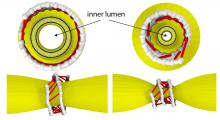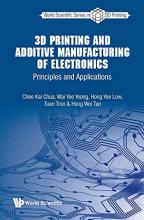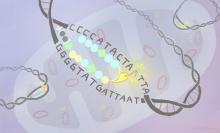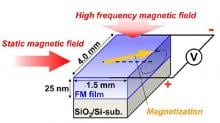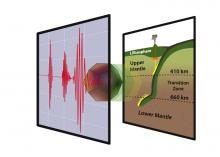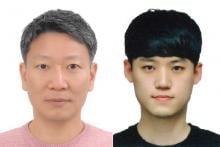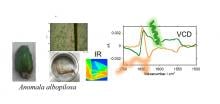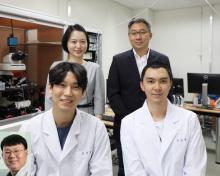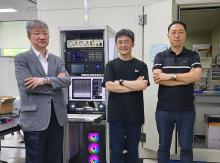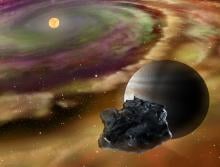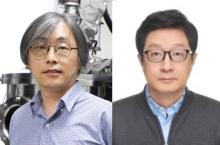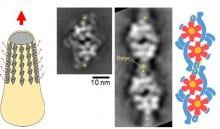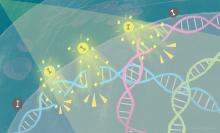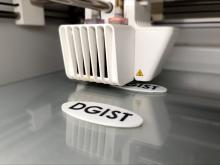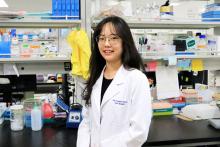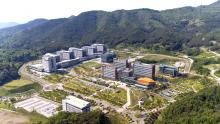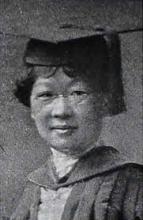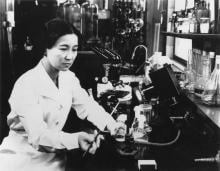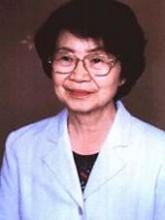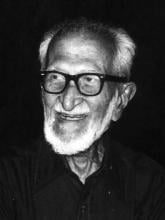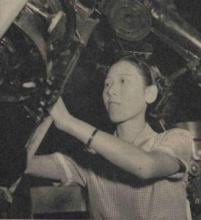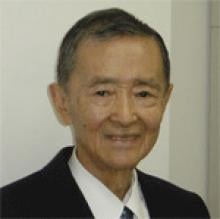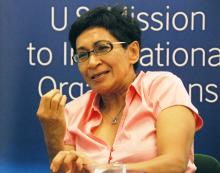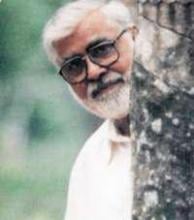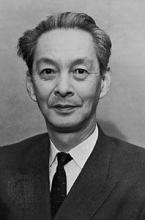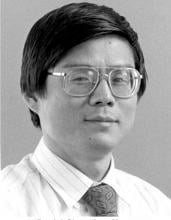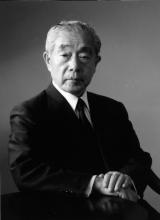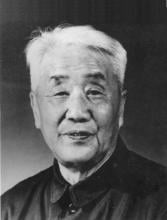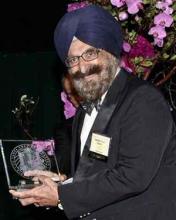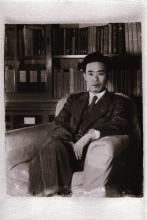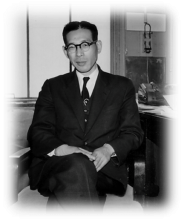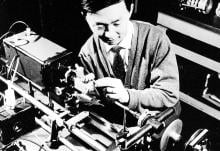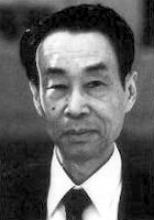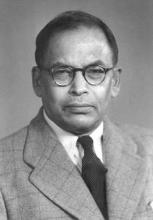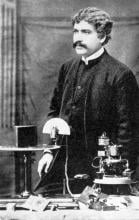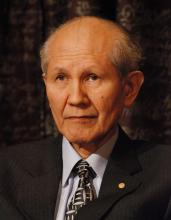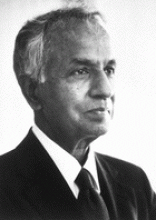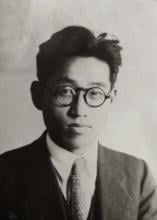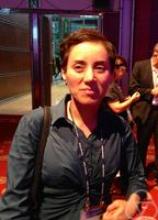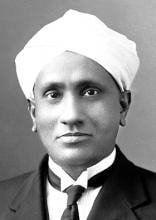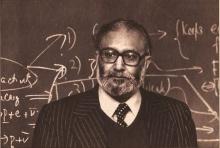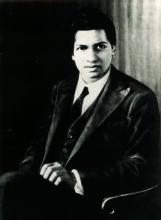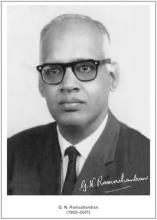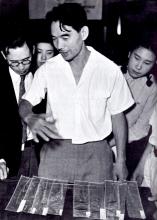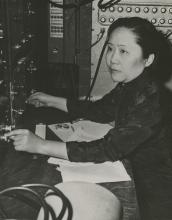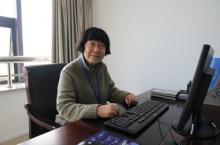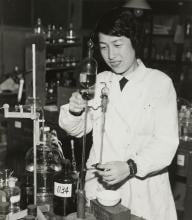Science
News
02 Sep 2021
Researchers at Kanazawa University report in Proceedings of the National Academy of Sciences how a protein molecular motor can chop off a piece of cell membrane. The constrict-and-cut mechanism resembles that of a ratchet motor, and is of importance in processes mediating the entry of particles into cells.
02 Sep 2021
Researchers have developed a general quantum algorithm that can directly calculate the energy difference of an atom and molecule using a quantum computer. By avoiding the need to calculate the total molecular energies, the general algorithm is expected to be applied not only to quantum chemical calculations but also to various physical and mathematical problems, which are intractable with nowadays classical computers.
02 Sep 2021
Written by contributors ranging from world leading experts and researchers from the Singapore University of Technology and Design (SUTD) and Nanyang Technological University (NTU), 3D Printing and Additive Manufacturing of Electronics: Principles and Applications is designed to be a one-stop guide for anyone interested in the 3D printing of electronics.
01 Sep 2021
Prof. Jae Youn Hwang's team, DGIST, develops deep learning technology to segment buildings from aerial images
01 Sep 2021
Scientists from South Korea add foreign atoms to monolayer graphene in a controlled manner to selectively enhance its desirable properties
26 Aug 2021
A multi-functional, small molecule can tag mutant genetic sequences inside mitochondria for removal.
26 Aug 2021
Prof. Jong-Soo Lee, DGIST, succeeded in developing green-emitting Cd-Free quantum dot synthesis technology with high color reproduction capability
24 Aug 2021
Researchers have succeeded in storing electricity with the voltage generated from ferromagnetic resonance (FMR) using a nanometer-thin magnetic film. Exploring the storage characteristics of the commonly used iron-cobalt and iron-nickel alloy thin films, they found that by controlling the thermal conditions of the thin film to be within FMR excitation range, energy can be stored by all the electromagnetic waves that surround us – including Wi-Fi.
23 Aug 2021
Researchers at Ehime University have reported the sound velocity of MgSiO3 Majorite garnet up to the pressure of 18 Gigapascals and temperature up to 2,000 Kelvins. Their results lead to understanding of the mineral composition of the Earth’s mantle transition zone (MTZ), which has not been fully elucidated yet. This study suggests that a mechanical mixture of slab and mantle rocks, rather than equilibrated rocks, is more likely to explain seismological observations throughout the MTZ.
23 Aug 2021
Dr. Hyunki Lee's team selected for developing a system that precisely measures human movements
20 Aug 2021
Scientists create a new process control model to protect systems from assailants and natural fluctuations
19 Aug 2021
A two-dimensional map of proteins, including secondary structures, was obtained for the hindwings of an insect (Anomala albopilosa) at the spatial resolution of 100 µm. Mapping was achieved with the microscopic vibrational circular dichroism (VCD) system, which has been developed in our laboratory. As a result, the insect hindwing was revealed to be composed of segregated microdomains consisting of proteins with different secondary structures.
12 Aug 2021
The Targeted Neuronal Network Regeneration research group from the Department of Robotics Engineering at DGIST was selected
12 Aug 2021
Experiments conducted on genetically modified mice clarify the role of a protein in regulating properties of specific hippocampal neural circuits
10 Aug 2021
A new, energy-efficient method of electrical brain stimulation developed by researchers from the Daegu Gyeongbuk Institute of Science and Technology could aid stroke rehabilitation and has few side effects.
10 Aug 2021
Researchers have developed a novel technique to investigate the dynamics of the early Solar System by analyzing magnetites in meteorites utilizing the wave nature of electrons.
06 Aug 2021
Development of a deep learning technique that reduces the difference between image domains by separating and converting domain information of image capturing environments
06 Aug 2021
Researchers from the Daegu Gyeongbuk Institute of Science and Technology have developed a faster and more reliable way to print flexible digital devices.
04 Aug 2021
Combining two magnetic effects can manipulate the magnetic behaviours of a device, offering a novel opportunity for the next generation IT technologies.
02 Aug 2021
The Research Center for Thin Film Solar Cell, DGIST succeeded achieving the world’s highest PCE of 12.2% for flexible CZTS thin film solar cells.
30 Jul 2021
Scientists design an innovative file system that overcomes current performance bottlenecks when using solid state drives
29 Jul 2021
Korea’s DGIST collaborates for mass production of semiconductor-based optical switches.
21 Jul 2021
Recognized for its Research Outcome Related to PIM-based AI Processor Using TSMC’s Multi-bit RRAM
20 Jul 2021
Using electron microscopy and high-speed atomic force microscopy, researchers show the internal molecular motor behind the gliding mechanism for Mycoplasma mobile to consist of two ATP synthase-like molecules. Sharing a similar structure with ATP synthase suggests a common evolutionary ancestor. This synthase-like ATPase is challenging the origin of cells and proteins themselves.
19 Jul 2021
Researchers from The University of Tokyo Institute of Industrial Science report a machine learning-based model for predicting the bonding properties of materials
14 Jul 2021
Researchers have found a way to enhance radiation therapy using novel iodine nanoparticles.
14 Jul 2021
Scientists develop a 3D-printed pressure sensor embedded with a temperature sensor from conductive carbon-based composites.
12 Jul 2021
- Gowoon Son, DGIST, to earn a Doctorate from Maastricht University
08 Jul 2021
Molecular evolution of enzyme beyond recruit hypothesis
●First determination of crystal structures of aconitase X by X-ray crystallographic analysis
●Evidence of a common ancestor of aconitase superfamily, appearing before the previously proposed one
●Evolutional insight of requirement of complicated metabolic pathways in primordial cell
Events

18 Sep 2007
Vienna, Austria - The general conference is where high-ranking officials and representatives from IAEA Member States will consider a range of issues. While the Forum is to stimulate discussion on scientific and other issues relating to the IAEA’s activities.

16 Dec 2007
Singapore - This event aims to reflect on significant scientific developments in physical and analytical chemistry, to discuss new ideas and trends as we move into the twenty-first century, and to raise the profile of chemical sciences in Singapore.

21 Nov 2007
Vietnam - Aside from serving as a dynamic platform to exchange ideas and experiences on air quality management, the conference is expected to produce action-oriented results such as the development and adoption of sound policies.

09 Nov 2007
Shanghai, China - Topics of the conference include structure and function of proteins and protein complexes, structure-based drug design and discovery, structural proteomics, protein folding, protein modeling and bioinformatics.

15 Oct 2007
Hyderabad, India - The diverse scientific programme will generate solutions to plant viral disease problems in all continents and create significant impact on developmental issues benefiting people worldwide.

04 Oct 2007
Nepal - The objective of this workshop is to identify and evaluate the current and potential alternatives of chemical pesticides.

20 Aug 2007
Bangkok, Thailand - The course explores key elements in designing efficient, equitable and financially sustainable population policies and reproductive health programmes in the context of health sector reform and Millennium Development Goals.

26 Aug 2007
The Malaysian Palm Oil Board (MPOB) will be organising PIPOC 2007 (International Palm Oil Congress organized by MPOB), the foremost oil palm/palm oil conference in the world. The theme this year is “Palm Oil: Empowering Change”.

10 Sep 2007
Berlin, Germany - It is Europe’s foremost platform for political, economic, cultural and science dialogue and exchange with the partner countries in the Asia-Pacific- Region.

15 Aug 2007
Rio de Janeiro, Brazil - The purpose of this Conference is to provide a forum for scientists, engineers, economists, and decision-making officials to discuss and appreciate the various aspects involving the implementation of sustainable energy programs.

16 Dec 2007
New Delhi - GLS-8 will focus on science & technologies of two-phase and three-phase flows in process vessels, new techniques of experimentation, modeling & simulation, and other innovations.

26 Nov 2007
Karnataka, India - The major objective of ACFD is to provide a common forum for exchange of new ideas and experiences amongst the scientists and engineers from Asia and other parts of the globe.

24 Oct 2007
Perth, Australia - The conference program will be broad and cross-disciplinary, aiming to bring together bioscience researchers working on plants, fungi and animals, including humans.

20 Sep 2007
Hong Kong - Rapid rise of the economics in the Far East has led to many large-scale new construction projects. As the number of fires, including arson and terrorist attack fires, appears to be increasing in the past ten years, fire safety has to be considered carefully.

20 Aug 2007
Yogyakarta, Indonesia - The principal aim of the conference is to create a forum for Asian plant pathologists who are interested in or related to scientific work, information or business in plant pathology.

20 Aug 2007
Bangalore, India - The programme will include foundation course in Bioethics, elective course in research ethics or clinical ethics, or ethics in social science research related to health. The trainees will then return to their parent institution to design a research project.

12 Sep 2007
Mumbai, India - National Centre for Science Communicators in association with Homi Bhabha Centre for Science Education, TIFR Mumbai is organising a National Conference on Science Education. The conference is open to professionals from the fields of Education, Research and Science Communication.

06 Aug 2007
Bandung, Indonesia - The Southeast Asia Urban Environmental Management Applications (SEA-UEMA) Project is a five-year partnership program between the Asian Institute of Technology (AIT) and the Canadian International Development Agency (CIDA), aims to improve the urban environmental management (UEM) policies and good practices in the region.

08 Sep 2007
Wuhan, China - China Association for Science and Technology (CAST) Annual Meeting is a platform for academic exchange and popularization of science and technology.

07 Jun 2007
The Research Center for the Holistic Computational Science of the TUS Research Institute for Science and Technology is to hold an international symposium on the theme "Frontiers in Computational Science of Nanoscale Transport" in conjunction with the Atomistix Workshop 2007.

03 Aug 2007
Shanghai, China - The Economic Science Association (ESA) is a professional organization devoted to economics as an observational science, using controlled experiments to learn about economic behavior.

30 Jul 2007
Singapore - This workshop is part of an overall effort to develop an interdisciplinary research team in quantum information science with specific emphases on communication theory and quantum algorithm.

27 Aug 2007
Hong Kong - The focus is on excellence in key areas of bioinformatics and computational biology.

17 Aug 2007
Selangor, Malaysia - This event is organised by Universiti Teknologi Mara. It is open to the public.

27 Nov 2007
Singapore - Be at the Forefront of Science & Technology in Asia. Industry Leaders congregate at CIA2007 to exchange ideas, showcase innovative intelligent technologies & grab business opportunities.

22 Oct 2007
This course aims to help journalists improve their technique in covering environmental news. The programme includes seminars, field trips and presentations from environmental experts designed to develop participants’ awareness of environmental issues.

18 Sep 2007
Leiden, the Netherlands - The existence of different Chinese beliefs on foetal life bears a number of implications for China to make morally sound and culturally sensitive social policies of any foetus-related issues.

04 Sep 2007
Bangi, Malaysia - The event provides the opportunity to bring together the people, projects, and issues from all over the world to share experiences and examine the challenge of applying mathematics to biological problems.

27 Nov 2007
Johor Bahru, Malaysia - This conference is designed to encourage extended free discussion of current results and ongoing related research in solid state science and technology. Topics include nanostructures, semiconductors, thin films and superconductors.
Giants in history
Chinese biochemist Chi Che Wang (1894 - 1979), one of the first Chinese women to study abroad, advanced to prominent research positions at American institutions including the University of Chicago and the Northwestern University Medical School.
Ruby Sakae Hirose (1904 – 1960) was a Japanese-American scientist whose research contributed significantly to our understanding of blood clotting, allergies and cancer.
Chinese electron microscopy specialist Li Fanghua (6 January 1932 – 24 January 2020) facilitated the high-resolution imaging of crystal structures by eliminating interference.
Sálim Moizuddin Abdul Ali (12 November 1896 – 20 June 1987), commonly referred to as the Birdman of India, was the first person to conduct systematic surveys of birds from across India.
Haisako Koyama (1916 – 1997) was a Japanese solar observer whose dedication to recording sunspots – cooler parts of the sun’s surface that appear dark – produced a sunspot record of historic importance.
Michiaki Takahashi (17 February 1928 – 16 December 2013) was a Japanese virologist who developed the first chickenpox vaccine.
Toshiko Yuasa (11 December 1909 – 1 February 1980) was the first Japanese female physicist whose research on radioactivity shed light on beta decay – the process in which an atom emits a beta particle (electron) and turns into a different element.
Angelita Castro Kelly (1942-2015) was the first female Mission Operations Manager (MOM) of NASA. She spearheaded and supervised the Earth Observing System missions during its developmental stage.
Malaysia’s first astrophysicist, Mazlan binti Othman (born 11 December 1951) was instrumental in launching the country’s first microsatellite, and in sending Malaysia’s first astronaut, Sheikh Muszaphar Shukor, into space.
Known as Mr. Natural Rubber, chemist and researcher B. C. Shekhar (17 November 1929 – 6 September 2006) introduced a number of technical innovations that helped put Malaysia’s natural rubber industry on the world map.
Shinichiro Tomonaga (31 March 1906 – 8 July 1979), together with Richard Feynman and Julian Schwinger, was awarded the Nobel Prize in Physics in 1965, for their contributions to advance the field of quantum electrodynamics. Tomonaga was also a strong proponent of peace, who actively campaigned against the proliferation of nuclear weapons and promoted the peaceful use of nuclear energy.
South Korean theoretical physicist Daniel Chonghan Hong (3 March 1956 – 6 July 2002) achieved fame in the public sphere through his research into the physics of popcorn.
Japanese chemist Kenichi Fukui (4 October 1918 – 9 January 1998) was the first Asian scientist to be awarded the Nobel Prize in Chemistry. Together with Roald Hoffman, he received this honour in 1981 for his independent research into the mechanisms of chemical reactions.
Chinese palaeontologist, archaeologist and anthropologist Pei Wenzhong (January 19, 1904 – September 18, 1982) is regarded as a founder of Chinese anthropology.
Physicist Narinder Singh Kapany (31 October 1926 – 4 December 2020) pioneered the use of optical fibres to transmit images, and founded several optical technology companies. Born in Punjab, India, he worked at a local optical instruments factory before moving to London for PhD studies at Imperial College. There, he devised a flexible fibrescope to convey images along bundles of glass fibres.
Japanese physicist Ukichiro Nakaya (1900-1962) made the world’s first artificial snowflakes. He started his research on snow crystals in the early 1930s at Hokkaido University, where there is an unlimited supply of natural snow in winter. By taking over 3,000 photographs, he established a classification of natural snow crystals and described their relationship with weather conditions.
The field of solid-state ionics originated in Europe, but Takehiko Takahashi of Nagoya University in Japan was the first to coin the term ‘solid ionics’ in 1967. ‘Solid-state ionics’ first appeared in 1971 in another of his papers, and was likely a play on ‘solid-state electronics’, another rapidly growing field at the time.
Charles Kuen Kao (Nov. 4, 1933 to Sept. 23, 2018) was an engineer who is regarded as the father of fibre optics. His work in the 1960s on long distance signal transmission using very pure glass fibres revolutionized telecommunications, enabling innovations such as the Internet.
Chika Kuroda (24 March 1884 – 8 November 1968) was a Japanese chemist whose research focussed on the structures of natural pigments.
Motoo Kimura (13 November 1924 – 13 November 1994) was a Japanese theoretical population geneticist who is best remembered for developing the neutral theory of molecular evolution.
Meghnad Saha (6 October 1893 – 16 February 1956) was an Indian astrophysicist best known for formulating the Saha ionization equation which describes the chemical and physical properties of stars.
Sir Jagadish Chandra Bose (30 November 1858 – 23 November 1937) was a scientist and inventor who contributed to a wide range of scientific fields such as physics, botany and biology.
Osamu Shimomura (27 August 1928 – 19 October 2018) was a Japanese organic chemist and marine biologist who dedicated his career to understanding how organisms emitted light.
Subrahmanyan Chandrasekhar (19 October 1910 – 21 August 1995) was an Indian astrophysicist who studied the structure and evolution of stars.
Joo-myung Seok (November 13, 1908 – October 6, 1950) was a Korean butterfly entomologist who made important contributions to the taxonomy of the native butterfly species in Korea.
Mathematician Maryam Mirzakhani (12 May 1977 – 14 July 2017) was the first and only woman and Iranian to date to win the Fields Medal in 2014 for her work on curved surfaces.
Sir Chandrasekhara Venkata Raman (7 November 1888 – 21 November 1970) was an Indian physicist who performed ground-breaking research in the field of light-scattering.
Mohammad Abdus Salam (29 January 1926 – 21 November 1996) was a theoretical physicist and the first Pakistani to receive a Nobel Prize in science.
Srinivasa Ramanujan (22 December 1887 – 26 April 1920) was a math prodigy and widely considered one of India’s greatest mathematicians. Despite having almost no formal training in mathematics, he made substantial contributions to mathematical analysis, number theory, infinite series and continued fractions.
Gopalasamudram Narayanan Ramachandran (8 October 1922 – 7 April 2001) is best known for developing the Ramachandran plot to understand the structure of short chains of amino acids, known as peptides.
Hitoshi Kihara (1893 – 1986) was one of the most famous Japanese geneticists of the 20th century. One of his most significant contributions was identifying sex chromosomes (X and Y) in flowering plants.
Chien-Shiung Wu (31 May 1912 – 16 February 1997) was an experimental physicist who made several important contributions to nuclear physics. Wu worked on the Manhattan Project – a top-secret program for the production of nuclear weapons during World War II and helped to develop a process for separating uranium into U235 and U238.
Meemann Chang (born 17 April 1936) is a Chinese palaeontologist who studied the fossils of ancient fish to understand the evolution of life. By examining fossils, she uncovered new insights on how vertebrates, animals with a backbone, migrated from the sea and became adapted to live on land.
Bibha Chowdhuri (1913 – 2 June 1991) was an Indian physicist who researched on particle physics and cosmic rays. In 1936, she was the only female to complete a M.Sc. degree at the University of Calcutta.
Lin Lanying (7 February 1918 – 4 March 2003) was a Chinese material engineer remembered for her contributions to the field of semiconductor and aerospace materials. Lanying was born into a family who did not believe in educating girls and she was not allowed to go to school.
Japanese geochemist Katsuko Saruhashi developed the first method and tools for measuring carbon dioxide in seawater


